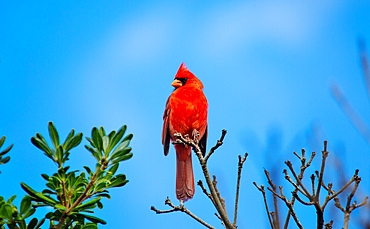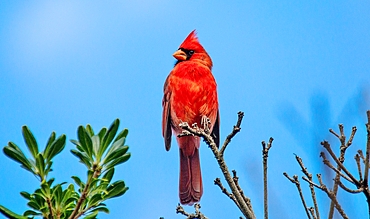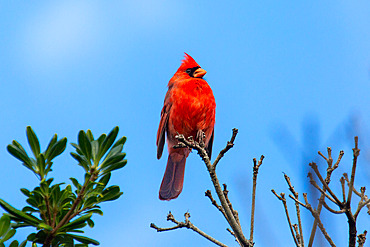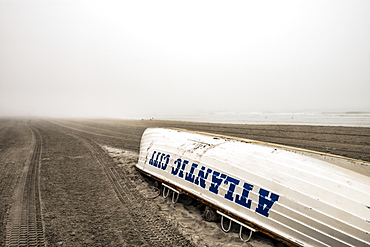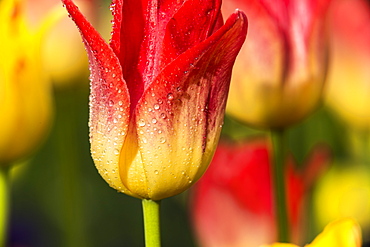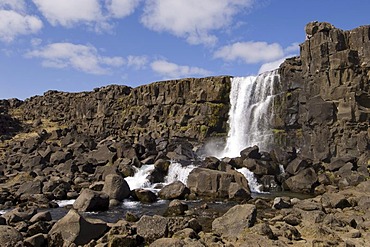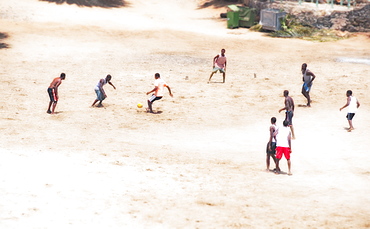Recent searches
Loading...
1358-285 - Male Northern Cardinal (Cardinalis cardinalis), a mid sized songbird common in Eastern North America, Bermuda, Atlantic, North America
1358-286 - Male Northern Cardinal (Cardinalis cardinalis), a mid sized songbird common in Eastern North America, Bermuda, Atlantic, North America
1358-284 - Male Northern Cardinal (Cardinalis cardinalis), a mid sized songbird common in Eastern North America, Bermuda, Atlantic, North America
1358-283 - Male Northern Cardinal (Cardinalis cardinalis), a mid sized songbird common in Eastern North America, Bermuda, Atlantic, North America
1358-282 - Male Northern Cardinal (Cardinalis cardinalis), a mid sized songbird common in Eastern North America, Bermuda, Atlantic, North America
1116-51355 - Escalator inside the 9/11 Memorial and Museum; New York City, New York, United States of America
1116-51359 - Christmas decorations in Manhattan; New York City, New York, United States of America
1116-51353 - Brooklyn Bridge, Manhattan; New York City, New York, United States of America
1116-51358 - Subway underground on tracks beside tiled wall, Manhattan; New York City, New York, United States of America
1116-51360 - An American Flag flies from a railing at the waterfront with a view of the Brooklyn Bridge, Manhattan; New York City, New York, United States of America
1116-51354 - Statue of Liberty; New York City, New York, United States of America
1116-51361 - Street signs on a post, a directional one way and West 37th Street, Manhattan; New York City, New York, United States of America
1116-51357 - Decorative handrails and patterns on the edges of steps inside a building in Manhattan; New York City, New York, United States of America
1116-51362 - Cyclist riding bike on wet walkway with glowing green light at night in Manhattan; New York City, New York, United States of America
1116-51364 - Woman eating a pretzel; New York City, New York, United States of America
1116-50229 - Manhattan Bridge at sunset, Brooklyn Bridge Park; Brooklyn, New York, United States of America
1116-50232 - Foggy conditions on Atlantic City beach with an overturned boat on the sand; Atlantic City, New Jersey, United States of America
1116-50228 - Triumph tulips in bloom, 'Apertif' (Liliaceae), New York Botanical Garden; Bronx, New York, United States of America
1116-50231 - Sunrise on Atlantic City Beach; Atlantic City, New Jersey, United States of America
1116-50230 - Manhattan skyline and Brooklyn Bridge at twilight, Brooklyn Bridge Park; Brooklyn, New York, United States of America
1116-50226 - Tulip bed (Tulipa) in bloom against a blue sky with sunburst, New York Botanical Garden; Bronx, New York, United States of America
1116-50227 - Darwin hybrid tulips in bloom, 'Ollioules' (Tulipa), Brooklyn Botanic Garden; Brooklyn, New York, United States of America
1116-42103 - A rigid airship flies by the Empire State Building, ready to collide, composite image
1116-41920 - Fishing boat in cape cod bay, cape cod massachusetts united states of america
832-380805 - Woman standing at divergent tectonic boundary between North American and Eurasian plates, photographing, Mid-Atlantic Ridge, rift valley, Krafla, Myvatn, Northern Region, Iceland, Europe
1178-19463 - Helicopter flying over Jefferson Memorial, Washington DC, United States
1178-19445 - Lincoln Memorial, Washington DC, United States
1178-19973 - People walking in Central Park in winter
1178-19446 - Jefferson Memorial, Washington DC, United States
1178-19456 - Columned building and reflecting pool, Washington DC, United States
1178-19968 - New York City fire department vehicle driving on snowy road
1178-19447 - Washington Monument, Washington DC, United States
1178-19454 - Washington Monument, Washington DC, United States
832-135102 - Oxararfoss waterfall on Mid-Atlantic Rift, Thingvellir National Park, Iceland, Europe
832-135101 - Caravan, Mid-Atlantic Rift zone, Thingvellir National Park, Iceland, Europe
832-109238 - Aerial view, paragliding, free gliding, Atlantic ocean, Island of Gomera, Tenerife, Spain, Europe
931-590 - Shark thought to be a tope with a zebra fish in attendance passes a large ball of blue jack mackerel (Trachurus picturatus) mid ocean, Azores, Portugal, Atlantic, Europe
1-28280 - Whale Beach, Bermuda, Central America, mid Atlantic
1-29499 - Whale Beach, Bermuda, Central America, mid Atlantic
917-407 - Flying Squid Species in mid-air (Ommastrephes bartramii). Extremely rare unusual image. South Atlantic Ocean. MORE INFO: Flying Squid use membranes between their tentacles (visible on pic) & two fins at the rear of the mantle to glide through the air in a similar way to flying fish. These unique adaptations allow them to avoid predation more easily. Ommastrephid squids are among the strongest swimmers in the Cephalopoda. A number of species are fished commercially. This particular species (Ommastrephes bartramii), is commonly known as "Neon Flying Squid" due to its colouration and its ability to glide over the ocean surface as seen in the photographs. Please note that this is a genuine image of a wild animal in its natural environment. It is not a digital manipulation.
917-227 - Flying Squid Species in mid-air, roughly 100 nm North of Tristan Da Cunha, South Atlantic Ocean. Flying Squid use membranes between their tentacles (visible on pic) & two fins at the rear of the mantle to glide through the air in a similar way to flying fish.
921-507 - 03/04/2009. Tarrafal bay Town Beach. Children and teenagers enjoy their local beach in the mid day. The Cape Verde islands have a large population percentage of youths. . Praia, Tarrafal , Sao Tiago Island. Cape Verde
917-232 - Flying Fish Species in mid-air, off Ascension Island, South Atlantic Ocean.
1034-25 - Endangered Southern right whale (Eubalaena australis) in Whangarei Horbour, Northland, New Zealand, South Pacific Ocean.
917-348 - Flying Fish Species (scientific name unknown) rare unusual image, in mid-air. South Atlantic Ocean.
921-508 - 03/04/2009. Tarrafal bay Town Beach. Children and teenagers enjoy their local beach in the mid day. The Cape Verde islands have a large population percentage of youths. . Praia, Tarrafal , Sao Tiago Island. Cape Verde
917-406 - Flying Squid Species in mid-air (Ommastrephes bartramii). Extremely rare unusual image. South Atlantic Ocean. MORE INFO: Flying Squid use membranes between their tentacles (visible on pic) & two fins at the rear of the mantle to glide through the air in a similar way to flying fish. These unique adaptations allow them to avoid predation more easily. Ommastrephid squids are among the strongest swimmers in the Cephalopoda. A number of species are fished commercially. This particular species (Ommastrephes bartramii), is commonly known as "Neon Flying Squid" due to its colouration and its ability to glide over the ocean surface as seen in the photographs. Please note that this is a genuine image of a wild animal in its natural environment. It is not a digital manipulation.
917-230 - Flying Squid Species in mid-air, roughly 100 nm North of Tristan Da Cunha, South Atlantic Ocean. Flying Squid use membranes between their tentacles (visible on pic) & two fins at the rear of the mantle to glide through the air in a similar way to flying fish.
921-506 - 03/04/2009. Tarrafal bay Town Beach. Children and teenagers enjoy their local beach in the mid day. The Cape Verde islands have a large population percentage of youths. . Praia, Tarrafal , Sao Tiago Island. Cape Verde
917-228 - Flying Squid Species in mid-air, roughly 100 nm North of Tristan Da Cunha, South Atlantic Ocean. Flying Squid use membranes between their tentacles (visible on pic) & two fins at the rear of the mantle to glide through the air in a similar way to flying fish.
917-267 - Flying Fish Species in mid air, scientific name unknown, South Atlantic Ocean.
917-262 - Flying Fish Species in mid air, scientific name unknown, South Atlantic Ocean.
917-350 - Flying Fish Species (scientific name unknown) rare unusual image, in mid-air. South Atlantic Ocean.
917-258 - Flying Fish Species in mid air, scientific name unknown, South Atlantic Ocean.
917-259 - Flying Fish Species in mid air, scientific name unknown, South Atlantic Ocean.
921-482 - 03/04/2009. Landscape view from the road in the area of Praia on Sao Tiago Island, Cape Verde. Native woman standing on hill side in mid day. . Praia, suburb of Praia, Sao Tiago Island. Cape Verde
921-484 - Country Side, Mountain Vilage, 03/04/2009. Landscape view from the road in the area of Praia on Sao Tiago Island, Cape Verde. Native woman standing on hill side in mid day. . Praia, Sao Tiago Island. Cape Verde
917-231 - Flying Squid Species in mid-air leaving a water trail behind it, roughly 100 nm North of Tristan Da Cunha, South Atlantic Ocean. Flying Squid use membranes between their tentacles (visible on pic) & two fins at the rear of the mantle to glide through the air in a similar way to flying fish.
917-261 - Flying Fish Species in mid air, scientific name unknown, South Atlantic Ocean.
917-405 - Flying Squid Species in mid-air (Ommastrephes bartramii). Extremely rare unusual image. South Atlantic Ocean. MORE INFO: Flying Squid use membranes between their tentacles (visible on pic) & two fins at the rear of the mantle to glide through the air in a similar way to flying fish. These unique adaptations allow them to avoid predation more easily. Ommastrephid squids are among the strongest swimmers in the Cephalopoda. A number of species are fished commercially. This particular species (Ommastrephes bartramii), is commonly known as "Neon Flying Squid" due to its colouration and its ability to glide over the ocean surface as seen in the photographs. Please note that this is a genuine image of a wild animal in its natural environment. It is not a digital manipulation.
917-349 - Flying Fish Species (scientific name unknown) rare unusual image, in mid-air. South Atlantic Ocean. MORE INFO: Note the trail on the surface of the water made by its tail.
917-229 - Flying Squid Species in mid-air, roughly 100 nm North of Tristan Da Cunha, South Atlantic Ocean. Flying Squid use membranes between their tentacles (visible on pic) & two fins at the rear of the mantle to glide through the air in a similar way to flying fish.
969-19 - Bottlenose Dolphin, (Tursiops truncatus) surfacing with bubble trail. Azores (RR)
969-140 - Sperm Whale (Physeter macrocephalus) breaching. Azores
969-28 - Bottlenose Dolphin (Tursiops truncatus) leaping duo. Azores
969-87 - Short-beaked Common Dolphin (Delphinus delphis) back leap. Azores
969-26 - Bottlenose Dolphin, (Tursiops Truncatus). Azores (RR)
969-159 - Cuvier's Beaked Whale (Ziphiius cavirostris) rescue in Horta Harbour. Azores
969-185 - Fin Whale ( Balaenoptera physalus) dorsal fin. Azores (A4 only).
969-24 - Bottlenose Dolphin, (Tursiops truncatus) leaping trio. Azores
969-195 - Blue Whale (Balaenoptera musculus) blow. Azores
969-141 - Sperm Whale (Physeter macrocephalus) eye underwater. Azores
969-89 - Short-beaked Common Dolphin (Delphinus delphis) back leap. Azores
969-25 - Bottlenose Dolphin, (Tursiops truncatus). Azores (RR)
969-20 - Bottlenose Dolphin, (Tursiops truncatus) leaping trio. Azores (RR)
969-160 - Cuvier's Beaked Whale (Ziphiius cavirostris) rescue in Horta Harbour. Azores
969-165 - True's Beaked Whale (Mesoplodon mirus). Azores
969-21 - Bottlenose Dolphin, (Tursiops truncatus). Azores (RR)
969-164 - Cuvier's Beaked whales, (Ziphiius cavirostris) logging at the surface. Azores (RR)
969-144 - Sperm Whale (Physeter macrocephalus) Fluke with identifying marks on tail. Azores (RR)
969-206 - Loggerhead Turtle (Caretta caretta) being captured for tagging project. Azores
969-147 - Sperm Whale (Physeter macrocephalus) upside down underwater. Azores
